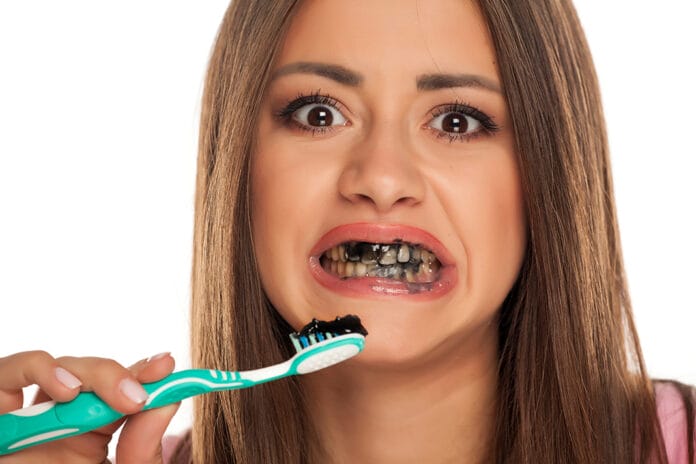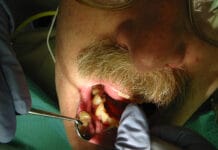Activated charcoal has become a popular ingredient in toothpaste, touted for its natural teeth-whitening properties. However, a recent systematic review has cast doubt on the effectiveness of activated charcoal as a whitening agent and has highlighted its abrasive effects on teeth.1
The review, which analyzed a range of in vitro studies, found that most commercially available activated charcoal toothpastes resulted in insignificant changes in tooth color. In contrast, toothpastes containing traditional whitening agents such as hydrogen peroxide or carbamide peroxide demonstrated the most significant whitening effects.
Materials and Methods
To assess color changes, the studies primarily used the VITA shade guide and a spectrophotometer, with the latter being more objective and accurate. Unlike the VITA shade guide, the spectrophotometer does not depend on light conditions or the clinician’s eye.
The review also highlighted the abrasive potential of activated charcoal toothpastes. Almost all studies showed significant changes, with activated charcoal-rich toothpastes emerging as the most abrasive. To measure abrasive effects, authors used instruments such as the profilometer or roughness meter, comparing the roughness of the dental surface before and after using the chosen treatment.
The studies included in the review were all in vitro, with most conducted on extracted human teeth and a few on bovine teeth. While human teeth are ideal for in vitro experiments, ethical issues and the difficulty of obtaining sufficient human teeth in good condition have led to using bovine teeth as substitutes. Bovine teeth have been found to have the greatest similarity to human teeth in terms of chemical composition.
Results
The concentration of activated charcoal in toothpaste is a critical factor, as it directly influences both the abrasive and whitening potential. Higher concentrations lead to greater abrasion and more noticeable color changes on the tooth surface. However, it’s important to note that the whitening effect of activated charcoal toothpastes comes from the removal of extrinsic stains, not by altering the intrinsic color of enamel. Thus, the whitening effect attributed to activated charcoal is essentially due to its abrasive effect.
Limitations
The review pointed out several limitations of the included studies. The number of studies on activated charcoal as a whitening agent was small, as it is a relatively new product. The selected studies had a moderate to high bias risk, as none performed a randomization process. Furthermore, all the studies were in vitro, with no studies involving human participants found in the literature.
Other limitations included the use of only one type of model stain, long and exaggerated brushing times, and the use of undiluted toothpastes during brushing. The wide variety of toothpastes with varying compositions used in the studies also hindered comparison.
Conclusion
While activated charcoal toothpaste can result in some whitening, its effect is less than that of other toothpastes containing traditional whitening agents. Moreover, activated charcoal toothpaste has a high abrasive potential, which may be detrimental to the tooth’s enamel.
Beyond the abrasiveness potential and decreased effectiveness of whitening, other literature reviews have brought up concerns about potential cancer risks and that charcoal inactivates fluoride, which could lead to a higher caries risk.2
Given the novelty of activated charcoal in toothpaste and the medium-low quality of the selected studies, more high-quality studies are needed to confirm these findings. Dental hygienists should be aware of these findings when advising patients on teeth whitening options.
Before you leave, check out the Today’s RDH self-study CE courses. All courses are peer-reviewed and non-sponsored to focus solely on pure education. Click here now.
Listen to the Today’s RDH Dental Hygiene Podcast Below:
References
- Tomás, D.B.M., Pecci-Lloret, M.P., Guerrero-Gironés, J. (2023). Effectiveness and Abrasiveness of Activated Charcoal as a Whitening Agent: A Systematic Review of In Vitro Studies.Annals of anatomy.2023; 245: 151998. https://doi.org/10.1016/j.aanat.2022.151998
- Charcoal Toothpaste: Deactivates Fluoride, Abrasive, and Some May Contain Carcinogens. (2019, June 28). Today’s RDH. https://www.todaysrdh.com/charcoal-toothpaste-deactivates-fluoride-abrasive-and-some-may-contain-carcinogens/











